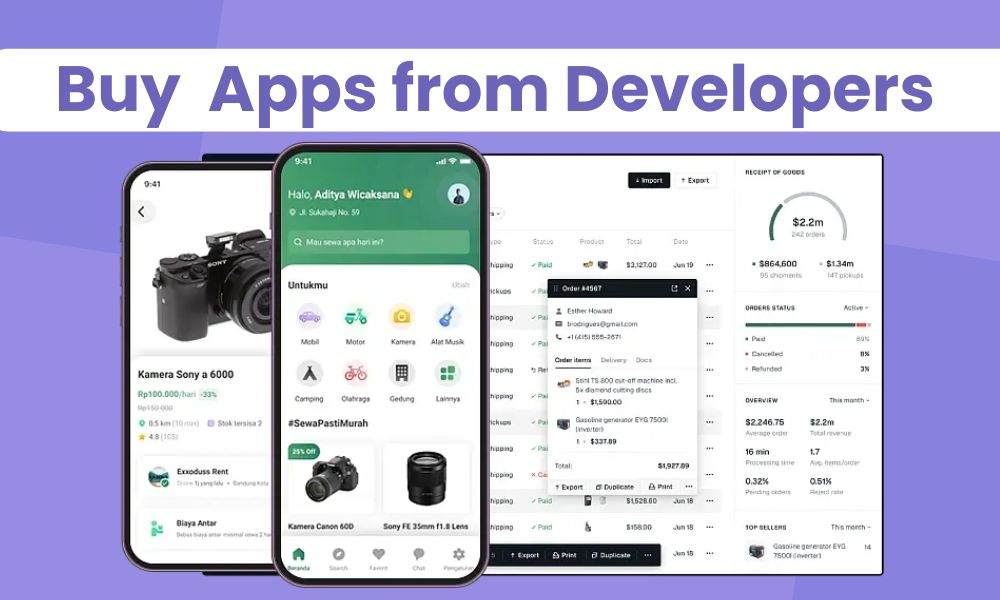The real estate industry is going digital, and more and more businesses are looking for ways to streamline operations, enhance customer experiences, and stay ahead of the competition. One way to do this is by creating a Zillow clone—a custom app that brings together the best features of Zillow and adapts them to your unique business needs. Whether you're an app development company looking to build a white-label real estate app or a real estate business looking to develop your own platform, a Zillow clone app can provide a powerful tool to boost your online presence and manage your property listings.
In this blog, we’ll walk you through 10 essential steps to successfully build a Zillow clone for your real estate business. By the end of this guide, you’ll have a clear understanding of how to turn your idea into reality, and why leveraging a whitelabel real estate app might be your best option.
Step 1: Define Your Objectives and Business Needs
Before you dive into the technical aspects of app development, it’s crucial to have a clear vision of what you want to achieve with your Zillow clone. Are you looking to create a platform for buyers, sellers, and renters to list properties? Or do you need a property management software solution for property managers to track listings, payments, and maintenance requests?
Having a strong business strategy is vital, as it will help you identify essential features, key functionalities, and the overall scope of the project. Defining your goals upfront will not only keep your development on track but also ensure that the Zillow clone app delivers the right value to your target audience.
Step 2: Conduct Market Research
Once you know what you want to achieve, the next step is to research the market. Understanding what features are already available in existing real estate apps like Zillow, Realtor.com, and Redfin will help you identify gaps that your Zillow clone can fill.
For instance, does Zillow have a feature for virtual property tours that could be enhanced or improved? Is there a demand for more personalized recommendations? Look for areas where your whitelabel real estate app can add something extra, whether it's a unique user interface, more detailed property data, or integrated payment systems.
Market research will also give you insights into the competition, allowing you to create a platform that stands out in the crowded real estate app space.
Step 3: Choose Between a Custom Build and White-Label Solution
One of the most important decisions you'll need to make is whether to go with a completely custom-built Zillow clone app or to opt for a white-label real estate app. Both approaches have their pros and cons, so let’s break them down.
- Custom Build: If you have specific needs that can’t be met by existing solutions, building a Zillow clone from scratch might be the way to go. This allows for full control over the design, features, and user experience. However, it may come with a higher upfront cost and longer development timeline.
- White-Label Solution: A whitelabel real estate app can be customized to your branding and features, offering a quicker and more affordable path to market. Since it's built on an existing platform, you can benefit from the core functionality of the Zillow clone app while saving time and money. It’s an excellent option for businesses that want to focus more on marketing and scaling rather than extensive development.
Step 4: Select a Reliable App Development Company
If you're not an expert in app development, working with a professional app development company is a must. Look for a team with experience building real estate apps or Zillow clones, and make sure they understand your business requirements.
An experienced company will guide you through every phase of the project, from initial planning to post-launch support. Check their portfolio for similar projects, read reviews from past clients, and ask them for a detailed development roadmap. Good communication and technical expertise are key to ensuring your app turns out exactly how you envision it.
Step 5: Design a User-Friendly Interface
The success of your Zillow clone largely depends on the user experience. Real estate is a highly competitive market, and a smooth, intuitive interface will help set your app apart from others. Think about how users will navigate your platform—can they easily find listings, search for properties, and filter results based on their preferences?
Focus on a clean, easy-to-use design that reduces friction for users. Remember, Zillow clones are often used by people of varying technical abilities, so simplicity is key. Responsive design is also crucial to ensure that the app works seamlessly across all devices, whether it’s on a desktop, tablet, or smartphone.
Step 6: Incorporate Key Features and Functionality
Your Zillow clone app should come with the right set of features that users expect in a real estate platform. These may include:
- Property Listings: Allow users to browse properties, filter by type, price, location, and more.
- Property Search: A robust search functionality to help users find properties that match their criteria.
- Virtual Tours: Virtual tours or 360-degree photos to give potential buyers a better feel for the property.
- Lead Generation Tools: Options for buyers and sellers to contact agents or request more information.
- Payment Integration: A payment system for making deposits or rental payments directly through the app.
- Ratings and Reviews: User-generated ratings and reviews for properties and real estate agents.
By integrating these features into your whitelabel real estate app, you’re making sure that your platform is competitive and engaging for users.
Step 7: Focus on Security and Data Privacy
Security is a top priority when it comes to any app, but it’s especially important in the real estate industry, where sensitive data such as financial information and personal details are involved. Make sure your Zillow clone app is equipped with strong security features such as:
- Data Encryption: Encrypt all user data, including payment information and personal details, to prevent unauthorized access.
- Secure Logins: Use multi-factor authentication and secure login methods to keep accounts protected.
- Compliance with Regulations: Ensure your platform complies with data protection laws, such as GDPR (General Data Protection Regulation) or CCPA (California Consumer Privacy Act), depending on your target audience.
By focusing on security and data privacy, you can build trust with users and avoid costly data breaches in the future.
Step 8: Integrate Property Management Software
To enhance the functionality of your Zillow clone, consider integrating property management software. This will allow property managers to track maintenance requests, rent payments, and lease agreements—all in one place.
Having this software integrated directly into your app will create a more seamless experience for both property managers and tenants. It can also improve your platform’s overall efficiency, helping real estate businesses save time and resources when managing multiple properties.
Step 9: Test Your App Thoroughly
Before launching your Zillow clone, you’ll need to conduct extensive testing to ensure everything works as expected. This includes checking for:
- Bugs and Errors: Make sure there are no technical issues that could disrupt the user experience.
- Performance: Test the app’s performance under different conditions, such as high traffic and slow internet speeds.
- User Experience: Have real users test the app to identify any potential pain points in navigation or functionality.
You can conduct beta testing to gather feedback and make any necessary changes before the official launch. Thorough testing will ensure your app is ready for the real world and will meet users' expectations.
Step 10: Launch, Market, and Scale
Once your Zillow clone is ready, it’s time to launch it to the public. A strong marketing plan is key to attracting users and building traction. Focus on creating a buzz around your app by leveraging social media, content marketing, influencer partnerships, and paid advertising.
Once your app is live, continue to monitor performance, gather user feedback, and make improvements based on data. Be prepared to scale as your user base grows. Regular updates, feature additions, and improvements will keep users engaged and help you stay ahead of the competition.
Final Thoughts
Building a Zillow clone for your real estate business can be a game-changer, offering you the ability to manage listings, attract new clients, and streamline property management. By following these 10 key steps—from defining your objectives and choosing the right development approach to testing and scaling—your Zillow clone app can deliver real value to both your users and your business.
Whether you choose a white-label real estate app or go for a fully customized solution, the key is to prioritize user experience, security, and scalability. With the right planning and execution, your Zillow clone can be an indispensable tool that helps your real estate business thrive in the digital age.
Looking to start your own Zillow clone project? Contact an experienced app development company today to bring your vision to life and build the next big real estate platform.


